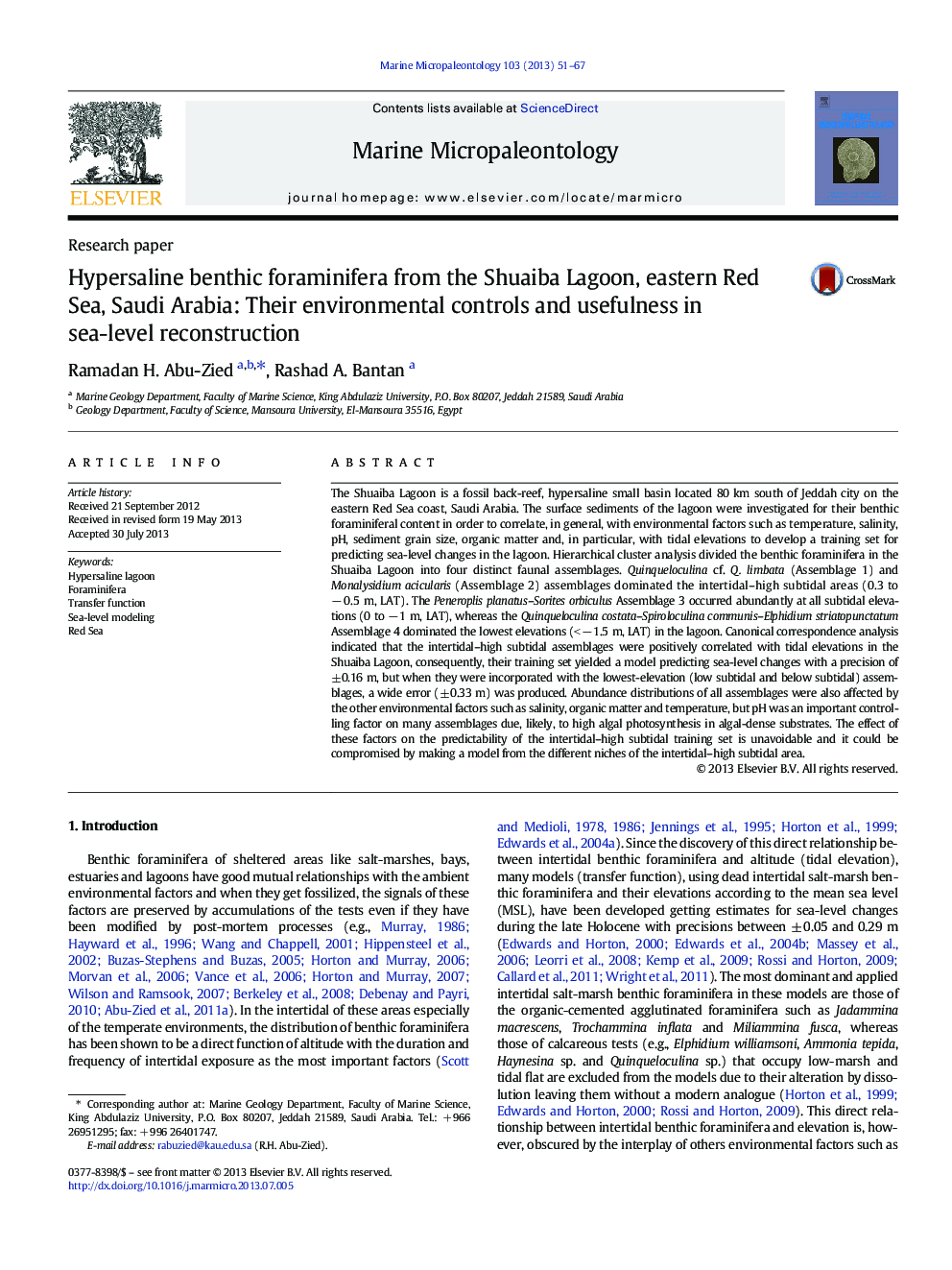| کد مقاله | کد نشریه | سال انتشار | مقاله انگلیسی | نسخه تمام متن |
|---|---|---|---|---|
| 4748864 | 1642182 | 2013 | 17 صفحه PDF | دانلود رایگان |
• Foraminiferal assemblages and their factors in the Shuaiba Lagoon were investigated.
• Each of these assemblages occupied a distinct elevational zone in the lagoon.
• Intertidal-high subtidal assemblages could predict the sea level change with ± 0.16 m.
• Low subtidal-deep water assemblages were deleterious on the TF giving a wide error.
• The pH controlled the distribution abundances of the symbiont-bearing assemblages.
The Shuaiba Lagoon is a fossil back-reef, hypersaline small basin located 80 km south of Jeddah city on the eastern Red Sea coast, Saudi Arabia. The surface sediments of the lagoon were investigated for their benthic foraminiferal content in order to correlate, in general, with environmental factors such as temperature, salinity, pH, sediment grain size, organic matter and, in particular, with tidal elevations to develop a training set for predicting sea-level changes in the lagoon. Hierarchical cluster analysis divided the benthic foraminifera in the Shuaiba Lagoon into four distinct faunal assemblages. Quinqueloculina cf. Q. limbata (Assemblage 1) and Monalysidium acicularis (Assemblage 2) assemblages dominated the intertidal–high subtidal areas (0.3 to − 0.5 m, LAT). The Peneroplis planatus–Sorites orbiculus Assemblage 3 occurred abundantly at all subtidal elevations (0 to − 1 m, LAT), whereas the Quinqueloculina costata–Spiroloculina communis–Elphidium striatopunctatum Assemblage 4 dominated the lowest elevations (< − 1.5 m, LAT) in the lagoon. Canonical correspondence analysis indicated that the intertidal–high subtidal assemblages were positively correlated with tidal elevations in the Shuaiba Lagoon, consequently, their training set yielded a model predicting sea-level changes with a precision of ± 0.16 m, but when they were incorporated with the lowest-elevation (low subtidal and below subtidal) assemblages, a wide error (± 0.33 m) was produced. Abundance distributions of all assemblages were also affected by the other environmental factors such as salinity, organic matter and temperature, but pH was an important controlling factor on many assemblages due, likely, to high algal photosynthesis in algal-dense substrates. The effect of these factors on the predictability of the intertidal–high subtidal training set is unavoidable and it could be compromised by making a model from the different niches of the intertidal–high subtidal area.
Journal: Marine Micropaleontology - Volume 103, September 2013, Pages 51–67
